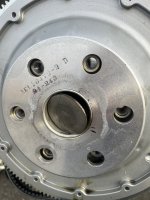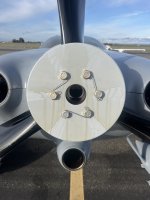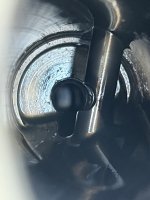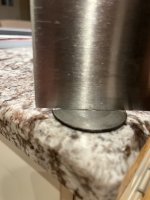rph142
Well Known Member
I stopped at Byron airport C83 this afternoon for fuel and immediately after takeoff the windscreen became covered in oil. I lost forward vis in just few seconds. I immediately turned back and landed while monitoring oil pressure. Thankfully the pressure never dipped below 60psi. The plane is parked on the ramp while I sort out what to do next.
The oil is coming from inside the spinner. The inside of the cowl is nearly free of oil aside from light spray around the starter ring. It’s a Catto FP prop with a saber extension and solid crank shaft. It appears to be a blown crank seal.
Some background - it’s a Continental Titan IO370 with a catto fixed pitch prop. 31 hours since new. I have an antisplat slobber pot on the crank breather. The engine was running great up until the oil issue.
Any thoughts on how to proceed? I’ll be leaving the plane here for a while I assume.
The oil is coming from inside the spinner. The inside of the cowl is nearly free of oil aside from light spray around the starter ring. It’s a Catto FP prop with a saber extension and solid crank shaft. It appears to be a blown crank seal.
Some background - it’s a Continental Titan IO370 with a catto fixed pitch prop. 31 hours since new. I have an antisplat slobber pot on the crank breather. The engine was running great up until the oil issue.
Any thoughts on how to proceed? I’ll be leaving the plane here for a while I assume.





